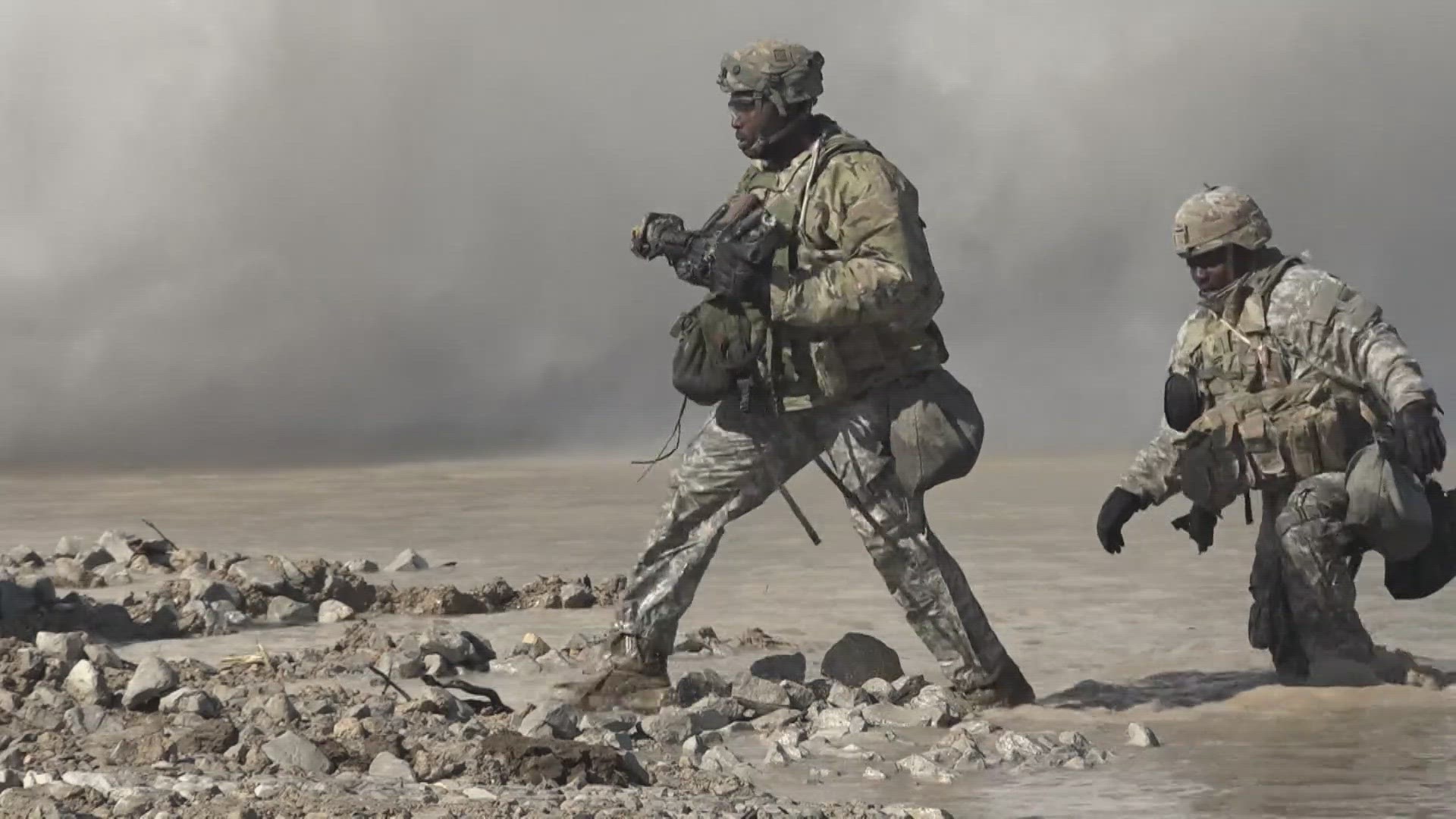FORT CAVAZOS, Texas — It was an eerie atmosphere on Belton Lake as thick white smoke filled the air. Soldiers in their camouflage gear were in the water moving with purpose. Each obstacle they overcome is a testament to their unwavering commitment to duty and the safety of their comrades.
Remagen Ready is the largest training exercise on Fort Cavazos since 2020. Remagen Ready is a blended live and constructive, joint, multi-echelon, division-sized combined arms exercise that includes a contested gap crossing.
“That all involves a lot of synchronization and communication with all the different assets that are involved with this division level exercise,” said Sergeant First Class Richard Judd. “It can be very difficult, but it takes a lot of initiative to continue that communication.”
The purpose of Remagen Ready is to improve III Armored Corps’ ability to provide lethal combat formations centered around its subordinate divisions’ abilities to fight in a realistic large-scale operations environment anywhere on the globe. Six thousand soldiers are participating in the training, which last from October 27th through November 9. Their goal is to get 711 wheeled vehicles and 159 tracked vehicles across Belton Lake on this improved ribbon bay bridge. All of them pushed their bodies to the limit, while mastering the art of combat.
"I’m tired. I’m fatigued. “I’m hungry, but in total it’s been a good training," said Sergeant Tekena Bobmanuel. “We haven't had hands-on training in about a few months. We are just getting back to being active again."
Through sweat and sacrifice, soldiers were ready to face any adversity.
"It’s what I signed up for, to train and protect this country,” said Bobmanuel.
The exercise’s inception and title are a homage to a Word War II operation that was vital to the Allied victory in Europe. In 1945, U.S. Forces with the 9th Armored Division made a daring plan to capture the Ludendorff Bridge crossing the Rhine River. The following 18-day battle is known as the Battle of Remagen.
The capture of the Ludendorff Bridge proved crucial to the success of the Allied Forces over Hilter’s Reich. Commander-in-Chief Dwight D. Eisenhower was able to alter his plans ahead of Operation Plunder to end the war and rapidly moved 5 divisions across the Rhine River into Ruhr, Germany’s industrial heartland. Germany surrendered May 7, 1945.
“We give them vignette’s that have happened in the past,” said Judd. “Once they get those experiences it really is an eye opener for them and it changes their demeanor with how important and critical it is on our end to get those maneuver forces across.”
Read more:
Watch more:

